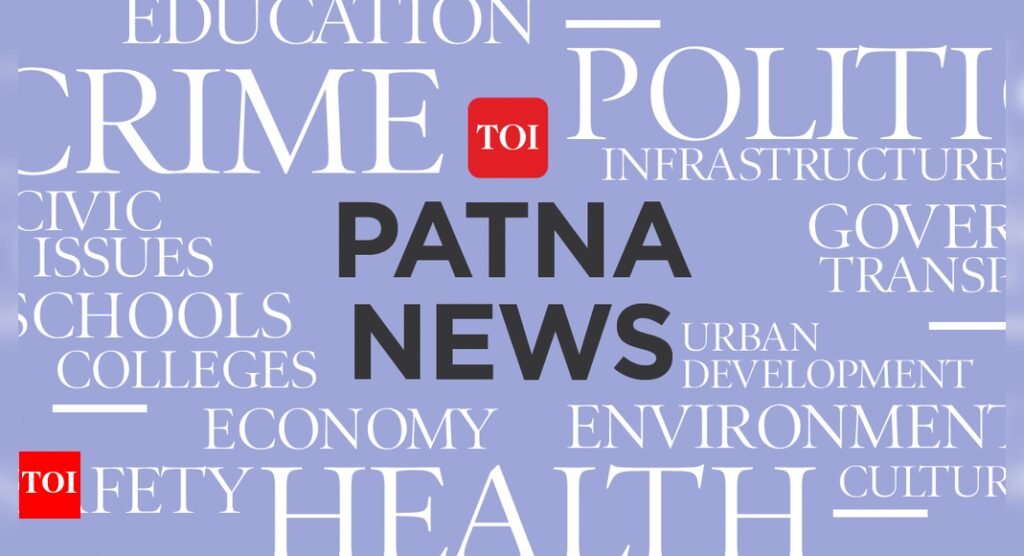Patna: Constable Komal Kumari had no idea her last patrol would be on a routine summer evening along Patna’s Atal Path. On June 12, the young officer was checking vehicle documents with her team under S K Puri police station when a speeding SUV barrelled towards them. She was killed instantly. A sub-inspector and an assistant sub-inspector were left critically injured. The accused driver fled, abandoning his vehicle, but was later tracked down and arrested.Komal’s death, tragic as it was, was not an anomaly. It was just one more name in the growing list of police officers and public servants attacked, maimed, or murdered in Bihar this year. Behind the rising numbers is a terrifying trend – uniformed personnel in the state are being openly challenged by criminals, by mobs and by a public that, in many cases, now feels emboldened to strike back.Just weeks after Komal’s death, Munna Kumar, a transport enforcement sub-inspector, was killed during a late-night patrol on National Highway 27 in Darbhanga district. An unidentified vehicle rammed into his official SUV on July 1, leaving two other officers injured. Munna, a resident of Khori village in Samastipur, had been conducting routine checks, hardly a task one would imagine ending in death.Meanwhile, in Patna, the police found themselves under threat again when an SUV attempted to ram through a checkpoint at Chitkohra Golambar on June 24. One week later, the same SUV made another attempt to run over police near the CDA building during a vehicle-checking drive. The brazenness of these acts speaks volumes about the climate of impunity emboldening perpetrators across the state.Beyond roads and checkpoints, even rural communities have become battlegrounds for state police. On July 12, in Nawada district’s Pakribarawan village, what began as a local dispute over drain construction exploded into violence. When police officers from Dial 112 arrived to intervene, they were attacked with chilli powder, bricks and even fruit-ripening chemicals. Six personnel were injured. ASI Shyam Kumar Mishra and driver Kunal Goswami sustained serious blows while woman constable Zaida Parveen suffered damage to her eyes. The message was unmistakable – the uniform is no longer a deterrent.In Shahpur locality of Ara, an excise department team conducting a raid on July 13 was met with bricks and stones hurled by locals protecting an illegal liquor trade. The chaos worsened and officers fired in retaliation, killing 45-year-old Sushil Yadav and injuring another. The aftermath only fuelled the lawlessness. Enraged residents blocked the road, demanding justice and allegedly held the excise officer responsible hostage. It took significant police mobilisation to retrieve him safely.Aurangabad, too, was not spared. On July 8, near the Sanda canal under Kutumba police station, a mob freed three detainees from custody and vandalised the police vehicle. Several policemen were hurt in the fracas.The cost of such confrontations is fatal more often than not. In Munger district on March 14, ASI Santosh Kumar tried to break up a violent clash between two local groups near ITC Nandlalpur village. He was attacked with a sharp weapon, suffered grave head injuries, and lost consciousness. Though rushed to Sadar Hospital and then referred to Patna, he succumbed to his wounds. He was attached to the Dial 112 emergency service and died trying to restore order.Only two days earlier in Araria, ASI Rajiv Ranjan met a similar fate. While attempting to arrest a suspected drug peddler, Anmol Yadav, Ranjan and his team were attacked by a mob opposed to the arrest. Pushed and beaten under Phulkahana police station limits, Ranjan died of his injuries. The brutality has spilled beyond the police force. On May 22, Praveen Sharma, a 35-year-old army soldier home on leave, was beaten by local criminals near Mahamanna village in Gaya. He suffered serious head injuries and died during treatment at the Military Hospital. “The police administration is completely inactive,” said social worker Narendra Sharma alias Guddu Sharma. “People here are frightened and angry. The criminals are fearless,” he added.“The criminals are receiving political support. Otherwise, they would not dare to attack the police,” said D M Diwakar, a social analyst. “They have no fear of consequences. This is because many election-winning candidates have criminal backgrounds, as revealed by the ADR report. These elements believe that they are beyond the reach of the law,” Diwakar added.He said political interference has dissolved public respect for law enforcement. “Without political backing, these criminals would not dare touch even one officer. But now, families of accused mafias openly attack police. There is no fear of legal action for assaulting officers. The political influence is deep and that is very dangerous. It shows a breakdown in democratic values,” Diwakar said.He added, “To restore order, the public must become aware. People must realise that in a democracy, the Constitution, not politicians, is supreme. Second, the police must remember that they are servants of the Constitution, not of political bosses. And third, the judiciary, which does not change every five years, must act consistently and uphold justice.”The govt, aware of the growing public outcry, has begun to respond. Bihar deputy CM Vijay Kumar Sinha recently announced tough measures to restore law and order. These include provisions for police encounters and the demolition of properties belonging to known criminals.In line with this, Bihar police headquarters has instructed all officers to launch intensive raids to arrest those involved in attacks on police personnel. “Ensure quick prosecution and stringent punishment,” read the directive.But for families mourning the loss of Komal Kumari, Santosh Kumar and Rajiv Ranjan, such promises ring hollow. The crisis has already cost too many lives and the fear is that the rot runs deep. In Bihar today, the very people tasked with enforcing the law are struggling to survive it.


